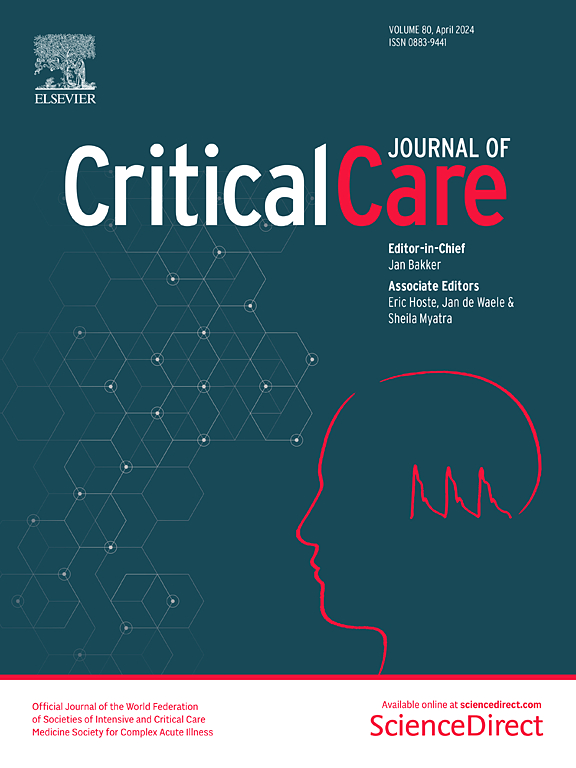Individual mHLA-DR trajectories in the ICU as predictors of early infections following liver transplantation: a prospective observational study
IF 8.8
1区 医学
Q1 CRITICAL CARE MEDICINE
引用次数: 0
Abstract
Infections are a leading cause of early mortality after liver transplantation (LT). Prior to transplantation, cirrhosis-associated immune dysfunction significantly increases the risk of infection. This study investigated the potential of immune monitoring, with a focus on monocytic HLA-DR (mHLA-DR) expression, as a predictor of post-LT complications. We conducted a prospective study on 130 patients awaiting LT at Lyon University Hospital to assess mHLA-DR expression, lymphocyte subsets, and T-cell function before and after LT. Multivariate analysis and K-means longitudinal clustering were performed to explore the relationships between immune trajectories and clinical outcomes. Among the 99 patients who underwent LT, 35.4% experienced infections early post-LT. No difference in outcome was found regarding lymphocyte count or function. Delayed mHLA-DR recovery (Day 7 < 11,000 AB/C) and pre-LT MELD scores > 30 emerged as independent infection risk factors, with ORs of 12.1 [4.4–38.2], p < 0.0001 and 4.9 [1.4–18.4], p = 0.01, respectively. Patients with delayed mHLA-DR restoration also had reduced one-year survival (77.8% versus 98.3%, p = 0.003). K-means clustering revealed three distinct mHLA-DR recovery profiles, with the slowest recovery group showing the poorest outcomes. Our findings highlight mHLA-DR as an early predictor of post-LT infections. Monitoring post-LT immune function through mHLA-DR expression could guide individualized management strategies to improve outcomes. Trial registration The study was registered in the ClinicalTrials.gov registry: NCT03995537, date: June 20, 2019.求助全文
约1分钟内获得全文
求助全文
来源期刊

Critical Care
医学-危重病医学
CiteScore
20.60
自引率
3.30%
发文量
348
审稿时长
1.5 months
期刊介绍:
Critical Care is an esteemed international medical journal that undergoes a rigorous peer-review process to maintain its high quality standards. Its primary objective is to enhance the healthcare services offered to critically ill patients. To achieve this, the journal focuses on gathering, exchanging, disseminating, and endorsing evidence-based information that is highly relevant to intensivists. By doing so, Critical Care seeks to provide a thorough and inclusive examination of the intensive care field.
 求助内容:
求助内容: 应助结果提醒方式:
应助结果提醒方式:


